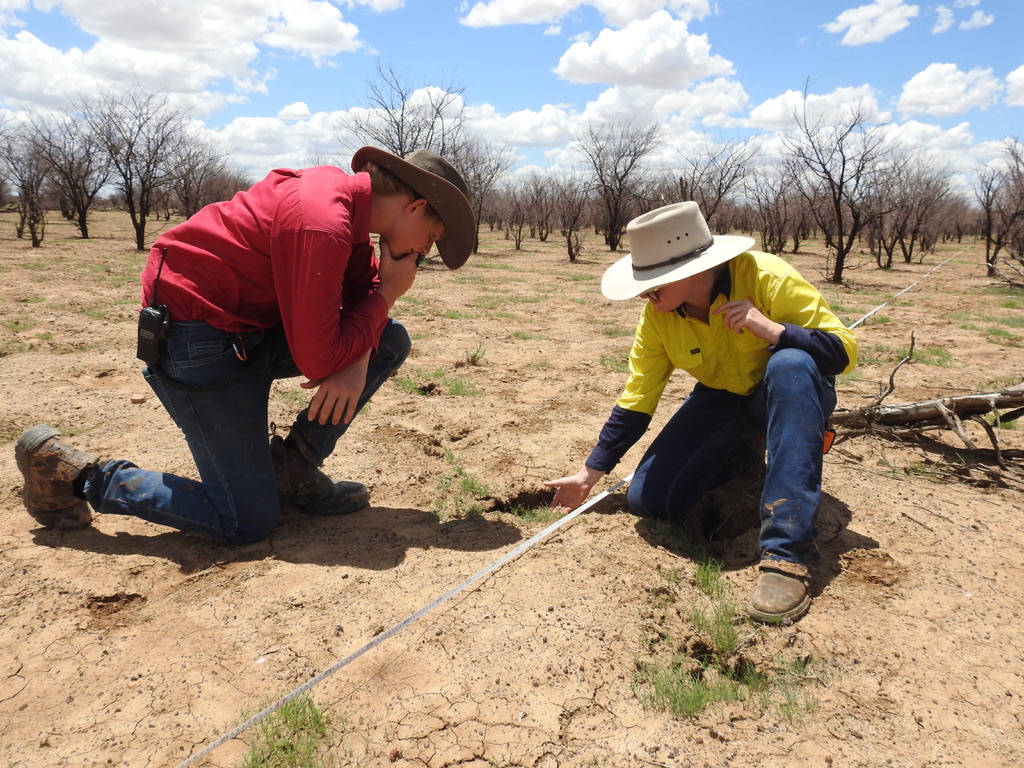Photos: Fast-moving bushfires a ‘real possibility’ in Western Qld this season
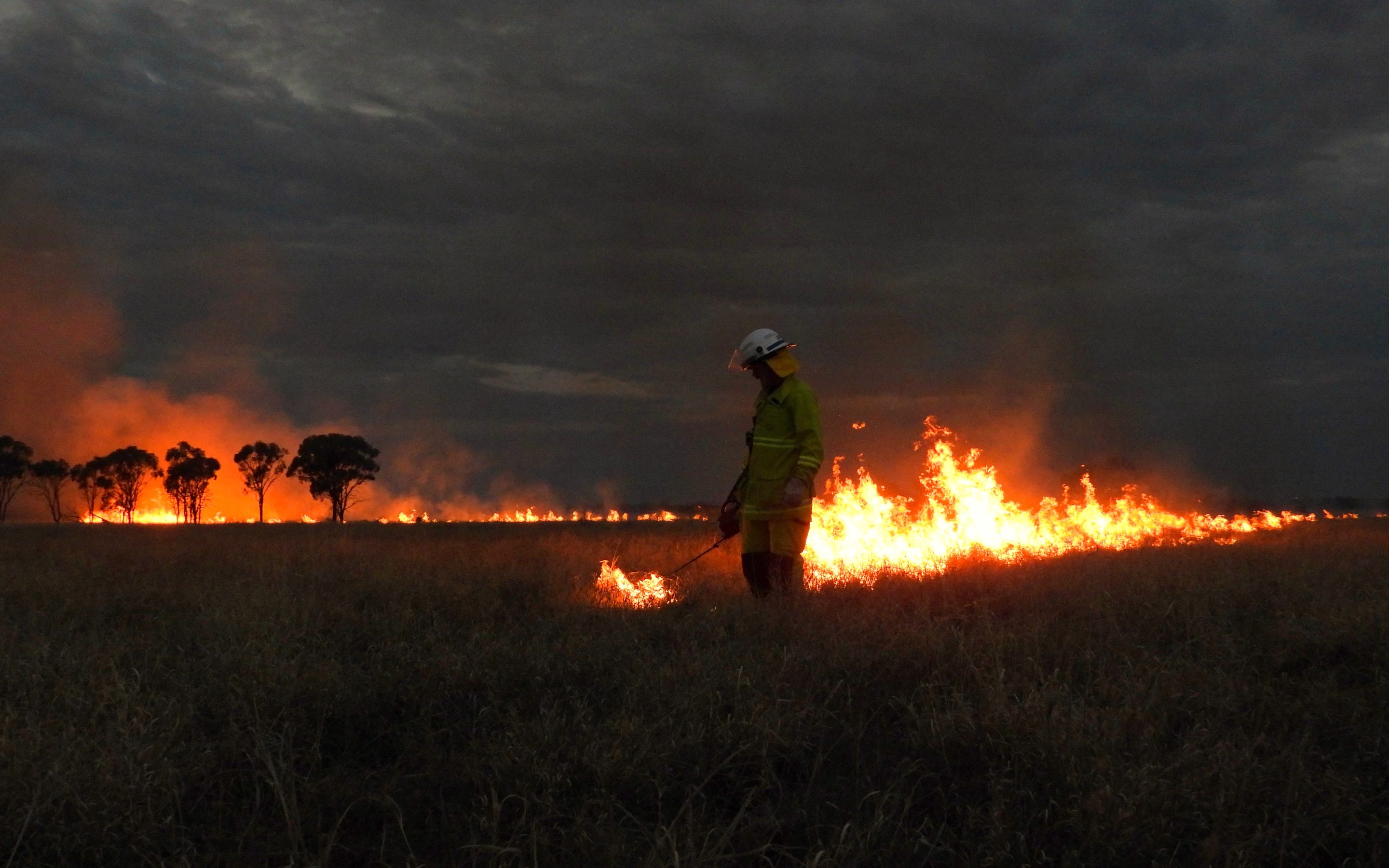
Fire season is coming up.
If you live in Western Queensland, you’ll know what that means – it’s time to start thinking about bushfire preparation.
At Desert Channels Queensland, we’ve been conducting fire assessments for our commercial stakeholders, who are preparing for a significant fire season for 2025/2026.
With heavy rainfall in May and April 2025, much of the Desert Channels region remains full of grass bulk, which has hayed off over winter and usually indicates a higher fire risk.
But a wetter-than-average summer is on the forecast, so it’ll be a tricky season to predict.
Will fires be more dangerous than usual?
The Queensland Rural Fire Service (QRFS) has been conducting hazard reduction burns in parts of Western Queensland, prioritising putting in fire breaks in grassland regions.
The Ilfracombe Rural Fire Service expects to conduct at least nine more controlled burns within the Longreach district, after burning along the Landsborough Highway this week.
The striking feature of the most recent burn was how quickly the fire spread.
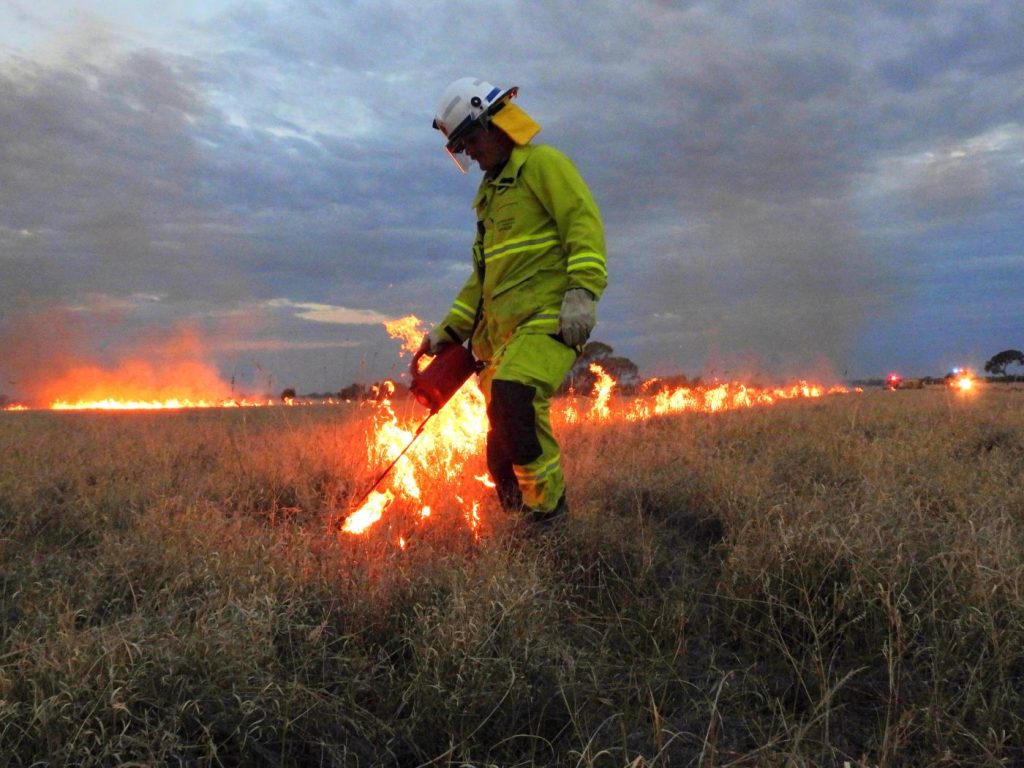
A firefighter uses a drip-torch to conduct hazard reduction burns between Ilfracombe and Longreach on 9 September, 2025. (Photo by Crispian Yeomans)
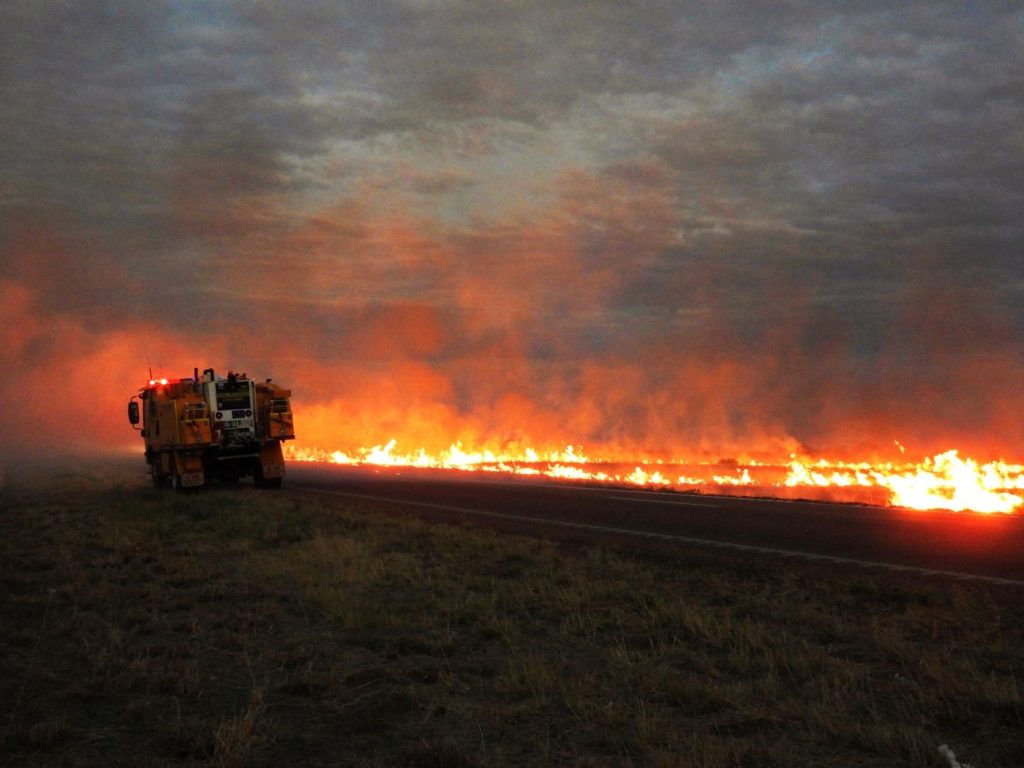
The Rural Fire Service monitors local traffic and alerts passers-by of low visibility over the two-way radio. (Photo by Crispian Yeomans)
Usually, it takes two hours for crews to burn a 23-hectare section of stockroute. But this year, it took just over 20 minutes.
That’s a rate of less than a hectare a minute – without wind.
Mark “Stretch” Tysoe from the Ilfracombe Rural Fire Service said the burn was a sign of what is to come.
“Tonight was a real eye-opener,” he said.
“You can see why we’ve done this. If that was a lightning strike, if we weren’t out here to burn like we did, that fire would’ve jumped the road and the railway line and kept on going.”

The hazard reduction burn was conducted along stock route near the Landsborough Highway at dusk. (Photo by Crispian Yeomans)
Unseasonal rainfall has meant some delays in hazard reduction burns, but has also increased the scope for QRFS to conduct more burns where soils have retained their moisture.
Mark Tysoe, who is First Officer with the Ilfracombe Brigade, said below-average temperatures also caused delays in the region.
“October is the ideal time to get in and do our hazard reduction burns, because you’ve still got the cooler weather behind you and you don’t get too much heat.
“We’re actually late at starting our burns this year, because it’s been so cold.
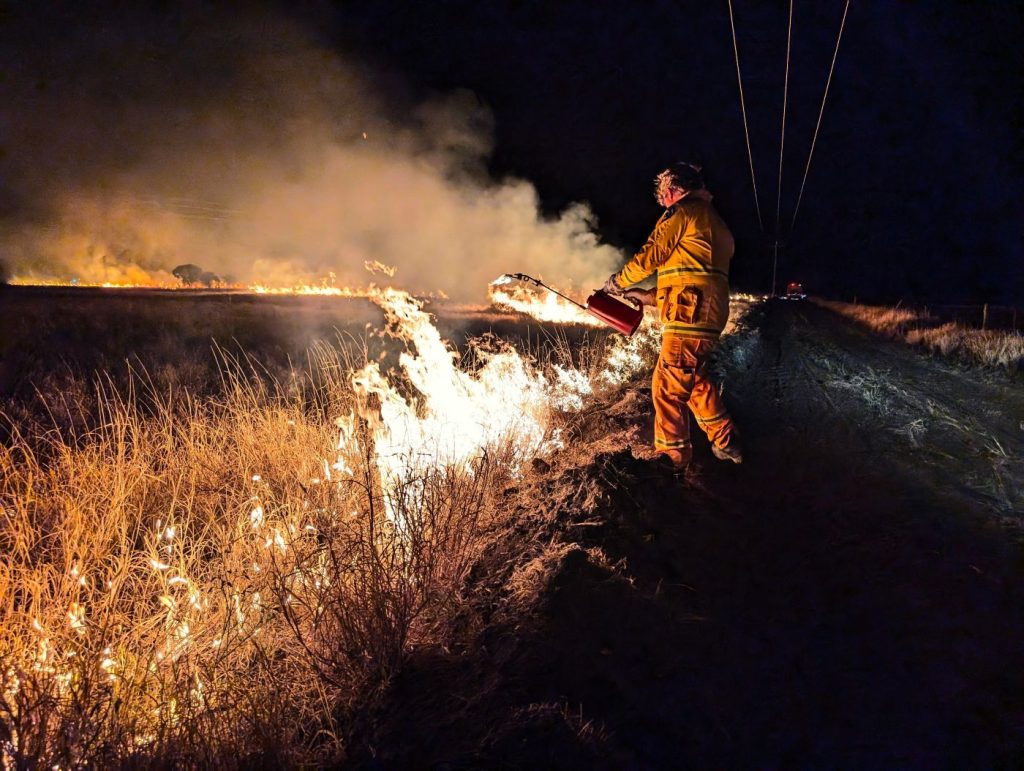
The Ilfracombe Rural Fire Service has welcomed several new faces ahead of the 2025/2026 bushfire season, but like many services, it is still in dire need for more. (Photo by Crispian Yeomans)
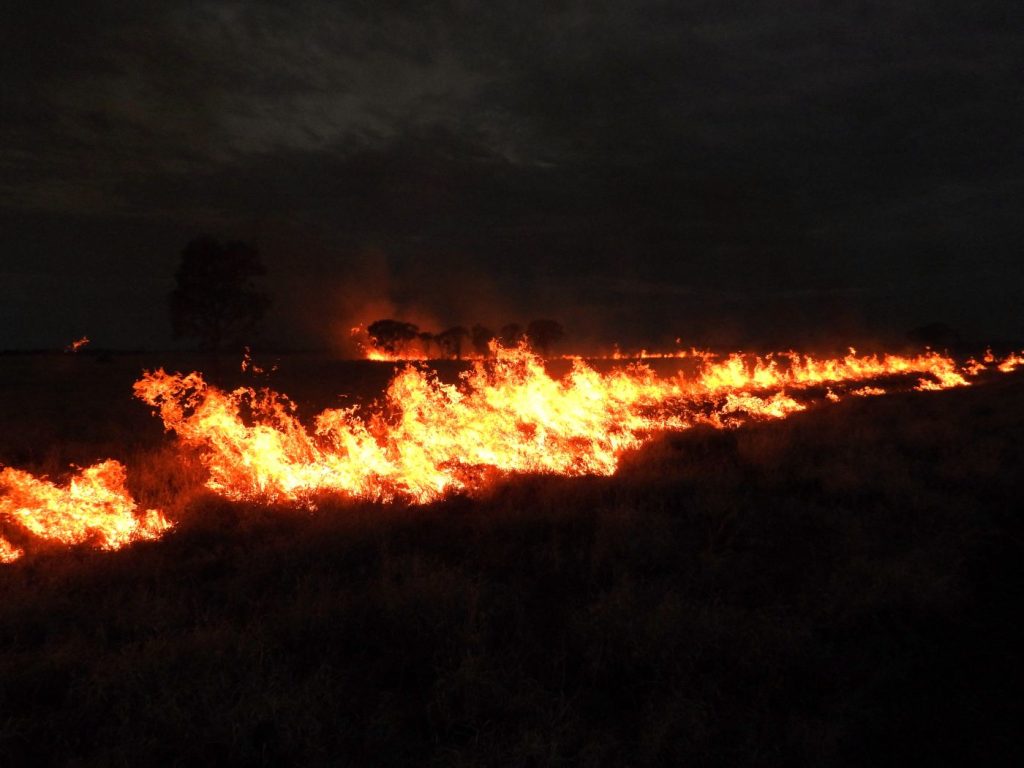
A 23-hectare section of stock route burns in 20 minutes in low-wind conditions and is “eye-opening” for the season to come, 11 September, 2025. (Photo by Crispian Yeomans)
“Cold air will just suck the fire out and kill the fire because there’s no oxygen. The colder your air is, the less oxygen is in the air. It won’t burn,” he said.
The Desert Channels region has 13,700,000 hectares of grassland, including plenty of native Mitchell Grass tussocks that permeate the region and are excellent fodder for livestock.
It’s important to remember that fire benefits Mitchell Grass, as the heat encourages the native tussocks to produce more seeds and grow more healthily in upcoming seasons.
According to Dr David Phelps, fires can potentially increase seed bulk in Mitchell Grass by twice as much, providing a decent rain spell occurs in the upcoming wet. That’s based on four decades of research in the Desert Channels region (Blackall, Julia Creek and Longreach).
Read the transcript
It’s been a long time since Shona, myself, Pete and Anne-Marie have seen fire like this out here and move like that out here.
CRISPIAN YEOMANS, HOST:
What do you mean?
MARK TYSOE:
We haven’t had he big bulk of feed behind us. We haven’t had the dry conditions behind us. Usually, if we were to light this up last year and done that, that would have taken a couple of hours.
But because there’s that much food behind there that hasn’t burnt for a long time. So that’s why that [the hazard reduction burn] was all over done within half an hour.
CRISPIAN YEOMANS:
Wow.
MARK TYSOE:
So that’s how scary it is. And that’s the season we’re walking into. And that’s half the reason why we worked with the urbans tonight. Just so everyone can get used to it.
Even Jamie said, I did not expect that to go like that.
CRISPIAN YEOMANS:
Oh really? So that was a very fast-moving fire, and we can expect fires to move that quickly in the coming summer season.
MARK TYSOE:
That’s why I said earlier. I crossed them on the two-way before. Welcome to our fire season. This is what our eye-opener is going to be like.
CRISPIAN YEOMANS:
Yeah, wow. So does that change the way that landholders should manage their land? Like how does that change?
MARK TYSOE:
Instead of putting in two fire breaks, four or five. You’d rather lose this little bit of ground than that bit of ground.
If you can go through and add more fire breaks sitting in there, whatever, especially with feed like this… You can just see how high that is, not even knee high. And you can see how quick that burns. So therefore, instead of putting one or two fire breaks in, go with three or four.
Get in around you and clean up around the houses, clean up around the yards and all your main infrastructure that is highly important to you.
CRISPIAN YEOMANS:
If a fire starts, we’re talking even a kilometre away, it could get to the house pretty quickly?
MARK TYSOE:
Prime example there. 20 minutes and that whole 23 hectares is gone.
CRISPIAN YEOMANS:
20 minutes and 23 hectares are gone.
MARK TYSOE:
Scary, isn’t it? So that’s less than a hectare in a minute.
CRISPIAN YEOMANS:
Yeah, true. Wow.
MARK TYSOE:
That’s pretty cruisey.
CRISPIAN YEOMANS:
That is pretty cruisey. Pretty unusual.
MARK TYSOE:
If you can go through and put that in the big situation and go from there, well, yeah. It’s very scary.
That’s what Jamie just said. Maybe we might have to start looking at doing some more hazard reduction burns around Longreach after seeing this.
What about national parks?
We also asked the Queensland Government to explain what they’ve done to prepare publicly-owned parks such as Lochern and Welford for the upcoming fire season.
They said Parks & Wildlife have already conducted their own planned burns and fire management works to mitigate fire risk, particularly after floods earlier in the year.
A spokesperson said approximately 1,700 hectares of Moorrinya National Park and surrounds has been managed in two separate hazard reduction burns this year.
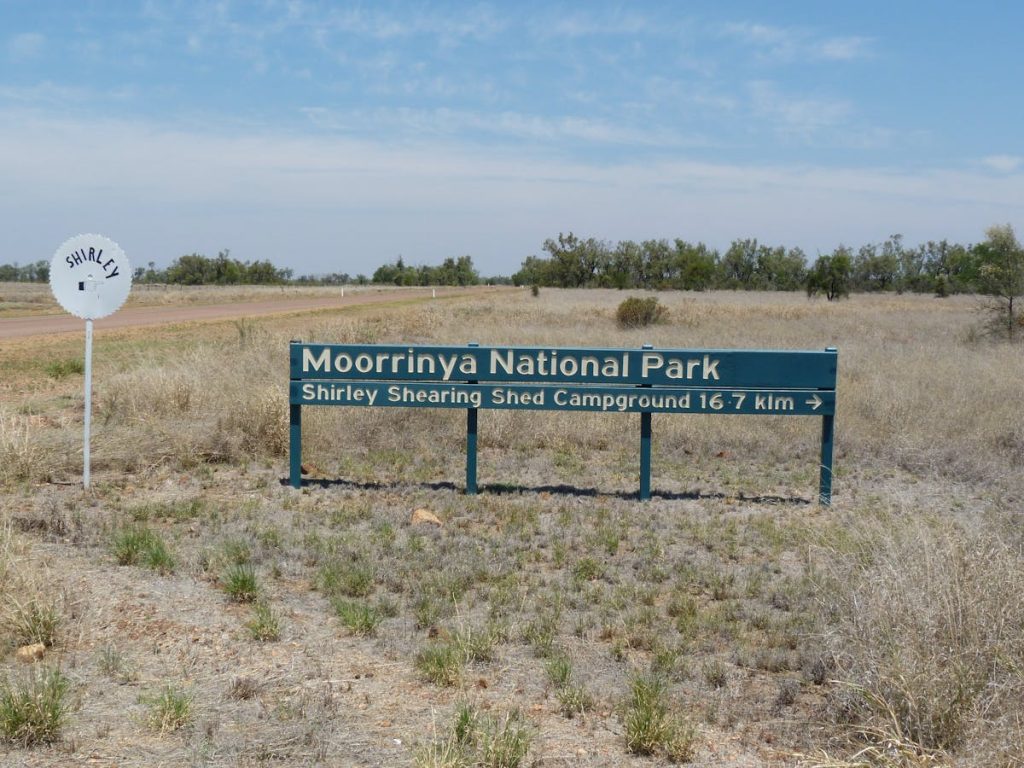
Queensland Parks & Wildlife are responsible for managing fire risk in state and national parks. (File photo: Tourism & Events Queensland)
Additionally, 195km of fireline tracks within Bladensburg, Idalia, Lochern and Welford national park areas have been improved or maintained by rangers.
The Department spokesperson said rangers had “heavily focused” on improving fireline networks, as many of the parks had been impacted by Western Queensland floods.
What is the fire risk forecast?
RFS Acting Assistant Chief Officer Shaune Toohey has said that grasslands will be one of the most at-risk vegetation ecosystems in Queensland this bushfire season.
“We’re expecting that [grasslands] to be our predominant fuel type this year that is vulnerable to ignition,” Mr Toohey told ABC Southern Queensland.
“So anywhere we’ve got those grass fuels kicking around, we already have seen a number of property owners, particularly our farmers and graziers, already take a number of measures to put those fire breaks in around those properties.”
How should I manage my fire risk?
If you are landholder, fire breaks will be essential for managing your fire risk.
The Queensland Rural Fire Service is encouraging landholders to also review their fire management plans and make sure their firefighting equipment still works.
Ilfracombe Rural Fire Service First Officer Mark “Stretch” Tysoe said landholders can reach out to their local brigades to brush up on fire management techniques.
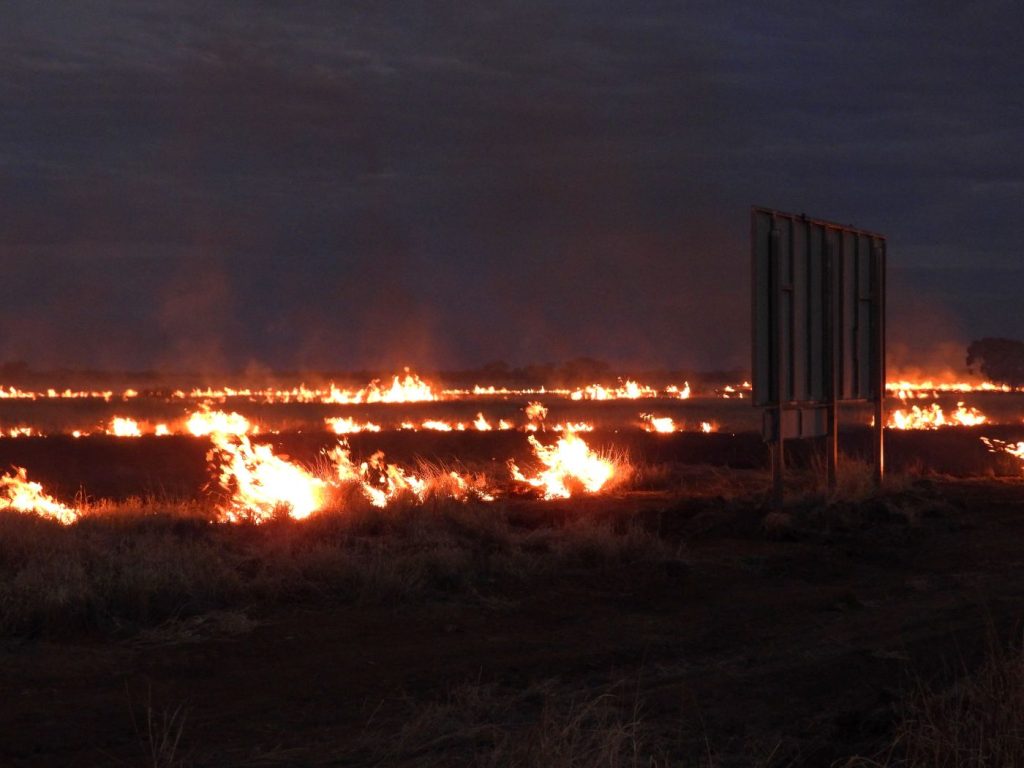
The Birdcage Hotel sign feels the heat during hazard reduction burns outside Longreach. (Photo by Crispian Yeomans)
He recommends taking extra precautions ahead of the 2025/2026 bushfire season.
“Instead of putting one or two breaks in, go three or four. Clean up around your houses, clean up around your infrastructure,” he said.
Fires will likely move quickly, and it’s important to take necessary precautions.
“Twenty minutes and all 23 hectares were gone. And that was without wind.”
It’s time to think about how you can reduce your fire risk.
